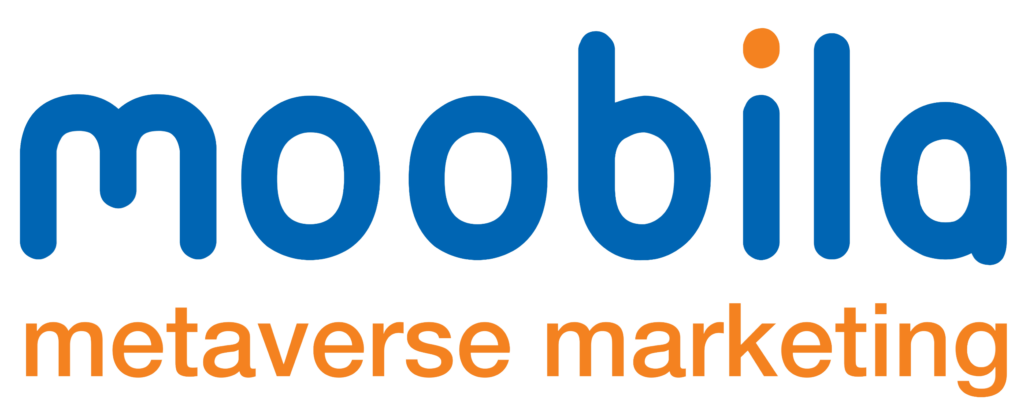Table of Content
But simply creating and publishing content is not enough to achieve results. You need a solid content marketing plan, complete with well-defined goals that align with your broader business objectives.
This article will walk you through the key steps for developing an effective content marketing strategy and setting SMART goals to drive success.
How to Develop a Content Marketing Strategy and Set SMART Goals
Content marketing involves creating and distributing valuable, relevant, and consistent content to attract and retain a clearly defined audience, driving profitable action for the business. A thoughtful content marketing strategy is crucial for cutting through the noise and connecting with your ideal customers amidst an ocean of digital information.
But a content marketing strategy without clear goals is like a rudderless ship – going nowhere fast. This is where SMART goals come in. SMART is an acronym that stands for Specific, Measurable, Achievable, Relevant, and Time-Bound. Setting SMART goals gives your content marketing efforts direction and purpose, while also providing a way to track progress.
Aligning your content marketing and SMART goals to the overarching business objectives allows you to build an audience and generate leads to support broader growth. With a strategic approach, content marketing done right delivers outstanding ROI compared to traditional marketing tactics.

6 Steps to Develop a Content Marketing Strategy
An effective content marketing strategy starts with understanding your audience, evaluating your existing content, determining your content mix, and mapping out a plan for creating and distributing content. Here are the key steps:
Define Your Goals
- What are the business objectives you want to achieve through content marketing?
- How will you define and measure success?
- What does the end vision look like?
Research Your Target Audience
- Who are our best existing customers? What traits do they share?
- What goals and pain points does our content need to address?
- Where and how do they consume content online?
Conduct a Content Audit
Choose Your Content Types
Create Your Content Plan
- Content types, topics, formats, and themes
- Content creation process and production timeline
- Publication calendar and content scheduling
- Distribution channels like email, social media, SEO, etc.
- Promotional strategies to amplify reach
Develop a Process for Content Creation
- Ideation: Brainstorm and prioritize topic ideas tailored to audience needs
- Outline: Define the framework, topics, and key points
- First draft: Flesh out the framework with well-researched information
- Editing: Refine the draft, check facts, tighten structure and flow
- Graphics: Add images, illustrations, videos, infographics
- Formatting: Apply visual styling, spacing, fonts, etc. for each content format
- Review and approval: Final check by all stakeholders before publishing
Goal setting is a fundamental part of any successful marketing strategy. Start by defining your overarching content marketing goals. Ask yourself:
Align your content marketing goals with specific business KPIs like lead generation, conversions, brand awareness, audience growth, etc. Having clearly defined goals gives direction and allows you to track progress.
Get crystal clear on your ideal target audience. Analyze their demographics, challenges, motivations, and content consumption habits. Some key questions to ask:
Gaining in-depth audience insights allows you to create tailored content that resonates. Research methods include surveys, interviews, focus groups, social listening, website analytics, and buyer persona development.
Take stock of your existing content across all channels and platforms. Analyze performance metrics like traffic, leads, conversions, and engagement. Identify high-performing content that connects with your audience. Look for content gaps that need to be filled.
An audit provides learnings to optimize and build on successful content while phasing out ineffective content. Maintain a content inventory for easy reference.
Determine the right mix of content formats and themes tailored to your buyer's journey. Include a variety of content types like articles, ebooks, videos, case studies, infographics, etc. Identify themes and topics your audience cares about.
Map content to match audience needs during initial research, consideration, decision, and retention stages. Mix educational and promotional content for lead generation and conversions.
Pulling together audience research, content audit findings, and your content mix preferences, map out a plan detailing:
A systematic content plan aligned with marketing goals ensures you consistently publish relevant, high-quality content.
Establish an efficient process for creating compelling content across multiple formats:
Having a streamlined process facilitates consistency, quality, and timeliness. Leverage tools like content calendars, templates, and content management systems.
Setting SMART Goals for Your Content Marketing Strategy
SMART is an acronym for the 5 key characteristics of robust goals: Specific, Measurable, Achievable, Relevant, and Time-bound. Applying the SMART framework to set content marketing goals and KPIs keeps you focused and sets you up for success.
Understanding SMART Goals
Let's explore the SMART goal criteria in-depth:
- Specific: Goals must have a well-defined, clear objective. Vague goals lead to ambiguity and make it hard to determine success.
- Measurable: Include quantifiable KPIs and metrics to track progress. Measurability provides tangible indications of what’s working well and what needs improvement.
- Achievable: Goals should be challenging yet realistic given your resources and capabilities. Unachievable goals only lead to frustration.
- Relevant: Goals must align with broader business objectives and audience needs. Irrelevant goals fail to deliver results.
- Time-bound: Attach specific deadlines or timeframes to goals to instill urgency. Time-bound goals prevent complacency and procrastination.
How to Set SMART Goals for Content Marketing in 6 Steps
Follow these steps to set effective SMART goals for your content marketing:
Outline your content marketing goals
Define relevant, measurable KPIs
- Website traffic
- Lead generation
- Sales conversations
- Email list growth
- Social media engagement
- Cost per lead/sale
- Content engagement metrics
Set benchmarks and targets
Consider resources and capabilities
Assign deadlines
Track and monitor
- Goal tracking dashboard: Create a centralized dashboard to track progress on each KPI. Red, amber, green status indicators quickly highlight gaps.
- Analyze and optimize: If targets are missed, analyze the data to identify weak points and course correct. Continually optimize based on learnings.
- Celebrate wins: Achieving KPI targets should be celebrated to keep the team motivated. Recognize what worked well.
- Evolve your goals: As goals are achieved, evolve to more advanced targets to keep growing. Goals need to stay dynamic.
Start by asking what you want to accomplish through your content efforts – drive leads? Increase brand awareness? Cultivate engagement and loyalty? Support SEO? Get specific.
Determine the key performance indicators that will indicate progress towards each goal. Common content marketing KPIs include:
Identify your starting benchmarks for each KPI based on current performance. Then determine your target for where you want those metrics to be within your timeframe. Benchmarks help track progress.
Assess your available content resources – people, budget, systems, expertise, etc. Set challenging yet achievable targets based on realistic capacity.
Determine specific timeframes for achieving each metric target – monthly, quarterly, annually, etc. This instills urgency and keeps things moving.
Set reminders to frequently evaluate progress on your KPIs using analytics tools. Monitoring helps identify what’s working and what needs adjustment.
Tracking Progress Towards Your SMART Goals
Consistently monitoring and reporting on your SMART content marketing goals provides crucial insights:
Tools like Google Analytics, Google Data Studio, SEMRush, and Hootsuite provide data and reporting capabilities to track goal progress.
Staying Ahead of the Competition
Your content marketing strategy shouldn’t exist in isolation. Regularly analyzing competitors and outperforming them through your content should be part of your plan.
Importance of Competitive Analysis in Content Marketing
Conducting ongoing competitive analysis provides many benefits:
- Identify competitors’ content strategies and topics to outshine them
- Pinpoint their messaging weaknesses to create differentiation
- Discover new partnership opportunities
- Uncover areas where competitors are outperforming you
- Inspire innovative ideas based on their successes and failures
How to Conduct a Competitive Analysis in 7 Steps
Follow these steps to perform an in-depth competitive analysis:
- Select competitors
Identify direct competitors as well as indirect competitors gaining traction in your space. Look beyond obvious choices.
- Define metrics
Determine performance metrics to gather intel on – content types, topics, formats, promotion tactics, leads, engagement etc.
- Gather intel
Use tools to compile data on competitors' content strategies and metrics – SEMRush, BuzzSumo, SimilarWeb, Alexa.com etc.
- Compare performance
Benchmark competitor content performance vs. your own. Identify their strengths and weaknesses.
- Strategize differentiation
Brainstorm creative ways to differentiate your content through unique topics, formats, distribution tactics, and partnerships.
- Identify partnerships
Look for potential co-marketing opportunities with non-direct competitors to expand reach.
- Apply learnings
Use insights gleaned to improve your content plan and surpass competitors.
Turning Competitive Analysis into Action
Turn your competitive findings into impact through:
- Creating differentiated content on hot topics competitors ignore
- Using superior formats and styles
- Promoting content through innovative partnerships
- Using compelling messaging focused on unique strengths
- Creating advanced lead magnets and gated content
- Improving technical SEO optimization
Regular analysis and swift application of learnings will better position you in the market.

Parting Words
Developing a robust content marketing strategy coupled with SMART goals provides tremendous opportunity to cost-effectively grow your brand and business in the digital age. Put in the work upfront to intimately understand your audience. Map out a data-driven content plan laser-focused on their needs. Maintain agility to outpace competitors. Continually optimize based on performance and learnings.
Check out Moobila DesignRush Profile
Set SMART Goals with Moobila
Leverage Moobila’s leading content marketing expertise and set SMART goals. Accelerate your digital marketing potential by partnering with Moobila today.
Written by: Rabeea,
Senior Content Lead Moobila
Senior Content Lead Moobila
Share this:

Moobila
Our passion is to build aspiring brands, with the with advanced technologies, creative strategies, inspiring content and personalized customer support. Our team of seasoned experts combine technical expertise with a flair to create digital campaigns that captivate audiences and drive tangible results.
Partner with us
Unlock your business potential with our committed team driving your success.
Recent Posts
Apple’s iPhone 17 Pro Max: A Closer Look at the Rumored Radical Redesign
April 20, 2025
No Comments
Read More » 

